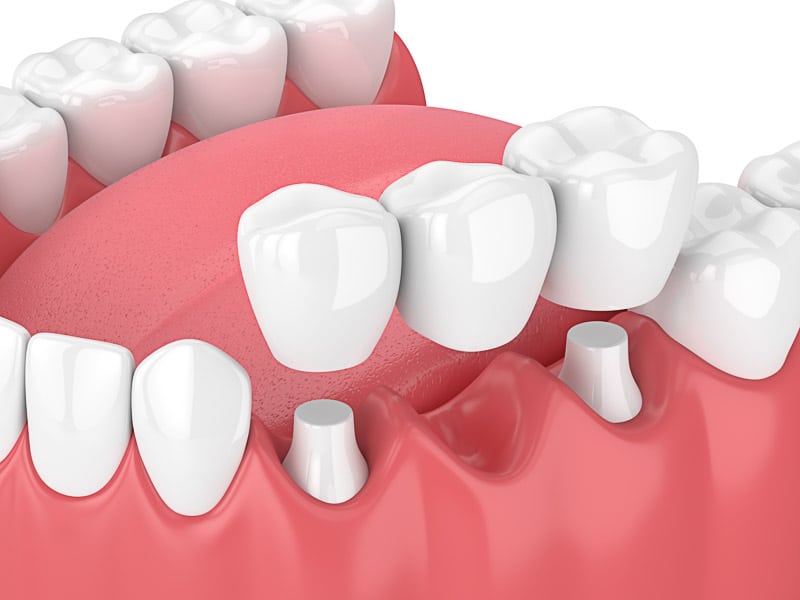Dental Bridges and their advantages
Dental bridges are used to replace missing teeth and are often an option when a patient has strong teeth in front of and behind an empty space (or spaces). One advantage of a dental bridge is that you can use it to easily replace missing teeth, and that with proper home care, it can last for many, many years. Dental bridges are strong, esthetic, and can be made from a number of materials including highly esthetic ceramics.

Disadvantages of dental bridges
The main disadvantage of a dental bridge is that to fabricate a dental bridge, you need to crown (or cap) the teeth in front of the empty space and behind the empty space; and depending upon the width of the space, you may need to crown more than one of the adjacent (abutment) teeth.
If the adjacent teeth already have crowns or large fillings, we are less concerned about making a bridge because the teeth have already had dental work. But when the adjacent teeth are healthy teeth with small fillings or no restorations, we try to avoid cutting those teeth for bridges, and prefer to use dental implants instead, as it’s a much more conservative approach.
Other options for replacing missing teeth
While there is nothing wrong with drilling teeth for crowns for a bridge, there are other replacement options including dental implants and removable partials. The most common and often best choice for replacing missing teeth is to restore the tooth or teeth with dental implants.
And if you are someone who has missing teeth and you are not a candidate for dental implants, and you don’t have anchor teeth that are strong enough to hold on a bridge, a removable prosthesis is a good option because it can be used to restore your smile and your ability to chew.